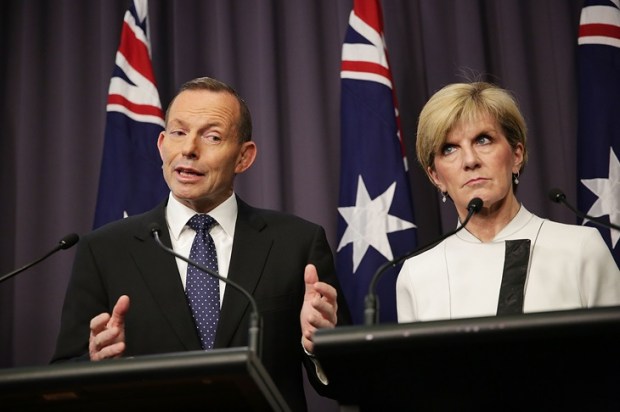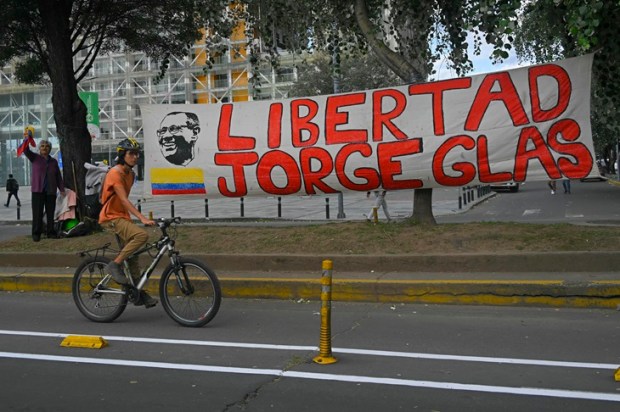I have two mottoes. This first is ‘never look back’ and the second, and more important one in these troubled times, is ‘don’t believe anything’.
That may sound a bit over the top, but it was fifteen years of watching and writing on the CAGW debate that got me thinking this way. My cynicism has been cemented by more recent forays into the world of Aboriginal politics.
I know from personal experience writing Bitter Harvest – the illusion of Aboriginal agriculture in Bruce Pascoe’s Dark Emu (Quadrant Books), that apparently intelligent and well-respected writers and academics are quite happy to subscribe to and overlook falsehoods and misrepresentations in order to further their favourite narrative.
Following the publication of my book in 2019, and the revelations of the website Dark Emu Exposed, Andrew Bolt could mount a more vigorous campaign than he had hitherto been able to against Dark Emu. And yet, in the face of all the evidence, Saturday Paper writer Andrew Morton felt confident enough to claim that he spent two days at the National Library of Australia reviewing the original documents and explorer accounts in general and:
They are – at every instance – quoted verbatim and cited accordingly in an extensive bibliography at the end of Pascoe’s book.
Had he done what he claimed, Morton must have known that what he said was false. My book showed that comprehensively. The campaign against Pascoe did not really start to bite until anthropologist Peter Sutton and archaeologist Keryn Walshe published their book Farmers or Hunter Gatherers in 2021. Their conclusions were generally (but not universally) accepted because they were experts. Mine were not, because I was not a subject expert – simply (as I freely admitted) an auditor.
A more startling example of disingenuousness in public debate is the promulgation of the ‘colonial wars’ in which large numbers of Aborigines were killed defending their land. Historian Henry Reynolds, who has long championed this narrative, has claimed recently in The Canberra Times that:
A new generation of historical research has provided powerful confirmation of the extent and duration of the ‘killing times’, particularly during the conquest of north Australia in the second half of the nineteenth century. The work of Lyndall Ryan and her team at the University of Newcastle has mapped massacre sites all over the continent.
Extensive new research, concerning the Native Mounted Police, has raised the possibility the Aboriginal death toll may have been well over 60,000. This would push the casualties in the frontier wars to a figure rivalling the total loss of Australian lives in the First World War.
Reynold’s reference to Ryan’s work implies that this is his source for the figure of 60,000 deaths. He provides no other source. Professor Ryan and her team have identified only 11,000 deaths. How is it possible, then, that this legion of researchers could have overlooked 50,000 deaths? The short answer is that they didn’t. The figure is totally implausible.
Keith Windschuttle has shown that the ‘extensive new research’ is based entirely on guesswork and invention. This is a must read article for anyone interested in the truth of this increasingly popular false narrative. Reynolds details this in his 2021 book Truth-Telling. He may genuinely believe ‘his truth’ but he relies on the fact that most of his audience won’t bother to read the book and discover just how weak his evidence really is. Instead, he publicly links it with a more robust source – the University of Newcastle Massacre Map. This is disingenuous on his part.
The point of this rather long-winded introduction is to establish that the professional or public standing of a supporter or opponent of some controversial proposal is no guarantee of the bona fides of any claim they may make in respect of it. Personal integrity doesn’t come into it.
Which brings me to constitutional law expert Dr Shireen Morris, a go-to-gal for The Australian in the Aboriginal Voice debate. Morris is director of the Radical Centre Reform Lab at Macquarie Law School and author of Radical Heart: Three Stories Make Us One (MUP). You might sense from her job description that when it comes to allaying fears that this Voice will become an enabler of even more judicial activism in furtherance of the aim of some form of Aboriginal sovereignty – an aim openly avowed by the most prominent proponents of the Voice such as Marcia Langton – rather than a benign entity ‘bringing us altogether’, Morris might not be the most obvious champion. Yet that is what she proposes in a couple of recent articles in The Australian.
But before I look at those articles, let me look at an earlier example which establishes that Morris has form when it comes to a disingenuous argument.
In a debate on Sky News Australia in September, she argued, ‘Aborigines were explicitly excluded from the Constitution.’ That is wrong, as I’m sure even Morris is aware. The moderator, Chris Kenny, failed to correct her on this falsehood. Indeed, he repeated it in a recent article in The Australian:
Without getting bogged down in semantics, it is important to understand the voice is not race-based. The push for an Indigenous voice is not based on racial characteristics or assumptions; rather, the nation’s original inhabitants need a voice because they were specifically excluded from the Constitution initially, have been subjected to specific laws and policies, were found under law to have inherited special rights to native title and the like, and they remain, as a cohort, the most disadvantaged group in the country.
Bear with me while I address in some detail this pernicious, and now apparently widely accepted, claim. In using the words ‘explicitly’ and ‘specifically’, Morris and Kenny can only have been referring to the original Section 51(xxvi) or Section 127 as these are the only sections that explicitly refer to Aborigines. Section 51(xxvi) did not exclude Aborigines from the Commonwealth or the Constitution. It merely excluded them from the class of people for whom the Commonwealth could make special laws, because that was the responsibility of the States. As British subjects, resident in Australia at the time, Aborigines were subject to every other provision of the Constitution in the same way that white people were.
And Section 127, which was repealed in 1967, only constrained government from counting Aboriginal people in ‘reckoning the numbers of people of the Commonwealth or a State or other part of the Commonwealth’. This has been interpreted to mean that Aborigines were not to be included in the census. This is almost certainly wrong. To begin with Section 127 was an outlier, lacking context, and placed right at the end of the Constitution in Chapter VII Miscellaneous, rather than being included as a proviso to Section 51 (xi) which gave the Commonwealth power to legislate regarding census and statistics. It is much more likely that Section 127 was a general provision designed to prevent the States from overstating their populations, by including estimated numbers of bush Aborigines, in the context of Commonwealth/State financial arrangements – for example, in relation to the apportionment between the States of surplus revenue from customs and excise. Rationalising the imposition and management of customs and excise was one of the major drivers for federation and one of the major sticking points that had to be resolved.
Section 25 contains similar wording to Section 127. It says:
For the purposes of the last section, [which concerns representation in the House of Representatives] if by the law of any State all persons of any race are disqualified from voting at elections for the more numerous House of the Parliament of the State, then in reckoning the number of the people of the State or of the Commonwealth, persons of that race resident in that State shall not be counted.
Section 25 was based on the 14th Amendment to the US Constitution, which was designed to penalise those States that, after the Civil War, did not enfranchise the Negro residents of that State. It was intended to have the same effect here in relation to, inter alia, Aboriginal people. It clearly contemplates a universal franchise including Aborigines.
Section 127 had nothing to do with denying citizenship to Aborigines, as is widely believed. This is a good example of the risk of unintended consequences flowing from poorly drafted constitutional provisions.
The preamble to the Constitution states:
Whereas the people of New South Wales, Victoria, South Australia, Queensland and Tasmania, humbly relying on the blessing of Almighty God, have agreed to unite in one indissoluble Federal Commonwealth under the Crown of the United Kingdom of Great Britain and Ireland and under the Constitution hereby established.
In 1901, the Aboriginal men of New South Wales, Victoria, Tasmania and South Australia (SA included aboriginal women as well) could vote for the colonial Parliaments. They were unquestionably part of ‘the people’ and many of them voted for the Constitution. Those that could vote in State elections, as detailed above, could vote in Commonwealth elections as well. Section 41 of the Constitution guaranteed this.
If it was intended that Aborigines should be specifically excluded from the Constitution, we would expect to find some discussion on this matter in the proceedings of the Constitutional Conventions. There is no such discussion.
A second example of Morris employing specious logic occurs in a November article in The Australian, in which she argues that a simple wording change in the referendum question will make the Voice impregnable to judicial activism and ensure that it remains advisory only. She says:
The Albanese government’s draft amendment for a First Nations voice is modest and reasonable but can be improved. It can be refined to address more explicitly worries about potential judicial activism – the concern that the High Court might interpret the provisions in unpredictable ways, creating legal uncertainty.
A First Nations voice always was intended to be non-justiciable. Non-justiciable constitutional clauses respect parliamentary supremacy. It means courts don’t get involved. Prudent constitutional drafting can ensure this. The amendment can be perfected to remove any doubt that parliament will be in charge of its operation, not the courts.
The words “proposed laws” should be included to confirm parliament’s authority, not the courts. Clause two of the draft amendment could be revised to read: “The Aboriginal and Torres Strait Islander voice may make representations to parliament and the executive government on proposed laws and matters relating to Aboriginal and Torres Strait Islander peoples.” Adding “proposed laws” will confirm and signpost non-justiciability. It will fortify the amendment against criticism and help answer concerns about uncertain judicial interpretation.
Constitutional clauses referring to proposed laws have long been considered unenforceable by the courts. This is because the High Court deals with laws while proposed laws are parliament’s business. Australia’s first chief justice and founding father of the Constitution, Samuel Griffith, explained in 1911 that parliament’s internal affairs were “not subject to … review by a court of law”. This is because, as former High Court judge Edward McTiernan explained, “Parliament is master in its own household.”
I take Griffith’s and McTiernan’s words to mean no more than that a party cannot seek a High Court injunction to prevent the Parliament from debating or even enacting a law that might be thought, for example, unconstitutional. Or on any other grounds. However, once a proposed law (a bill passed by the Parliament) becomes law by virtue of being granted Royal Assent, then it necessarily becomes justiciable and it is at this point that judicial activism may come into play.
More recently, in response to an article by Janet Albrechtsen, who pointed out that former High Court Justice Kenneth Hayne, who supports the Voice, had agreed that matters that came within the purview of the Voice would be justiciable, Morris had this to say:
Contrary to Albrechtsen’s assertions, the government’s draft creates no constitutional “right to be consulted”. Clause 2 provides the voice “may make representations” to parliament and government on matters relating to Indigenous peoples. “May” indicates representations are not compulsory. There is no requirement that the voice must be consulted before laws or policies are made, and no laws could be invalidated for non-compliance. It is not a constitutional “right to be consulted”.
This sounds specious to me. If the Constitution says the Voice ‘may’ make representations on matters affecting Aboriginal people, all that implies is that, on any particular matter, they ‘may’ choose not to. But if they do choose to make a representation, I find it hard to believe the High Court would not insist that the government had an obligation to consider that representation. In other words, there is a right to be consulted. And it is easy to see that a complaint that a representation was not adequately or fairly considered would be justiciable.
I sought the views of Professor David Flint in response to my propositions above. Here is his answer:
For any lawyer to claim to be able to predict conclusively what the High Court will or will not do is naive. Otherwise, there would be no cases going to the High Court.
To say that something is not justiciable forgets that the question of whether something is justiciable is in itself justiciable.
The history of the High Court is a history of surprises. This in recent years has been particularly so in relation to indigenous matters.
David pointed me to an excellent piece by former High Court Justice Ian Callinan, which is well worth reading. He essentially makes the same point as David Flint. He also notes
It is one thing to say the voice can make representations only, but in the real world of public affairs, as the Prime Minister candidly acknowledged, it would be a brave parliament that failed to give effect to representations of the voice.
Just as there is a real world of public affairs, there is a real world of judicial ones. In modern times, it is an open question whether the US constitutionalist Alexander Hamilton’s assertion that the courts are the least dangerous branch of government holds true.
The march of administrative law is almost inexorable. In 1995, in Teoh v the Minister for Immigration, the High Court decided that the process by which the minister reached a decision to remove from Australia, on character grounds, a convicted non-national drug importer was flawed because the importer’s infant children had a “legitimate expectation” under the international Convention on the Rights of the Child that their interests should have been, but were not, taken into account by the minister. The High Court so decided even though the convention had not been enacted into Australian law.
It is an elementary principle of constitutional law that an international treaty cannot bind Australia and its peoples unless and until the treaty is enacted and assented into law by the parliament and the governor-general.
The Declaration on the Rights of Indigenous Peoples is a resolution passed by the United Nations in 2007. The Australian government, under John Howard, refused to sign this declaration but, in 2009, the Rudd government formally endorsed it. That endorsement stands to this day, which suggests that there is now bipartisan support for the Declaration. It therefore now, arguably, forms part of our common law.
Article 19 of the Declaration (much of which was drafted by Aboriginal activists Mick Dodson and Megan Davis) states:
States shall consult and cooperate in good faith with the indigenous peoples concerned through their own representative institutions in order to obtain their free, prior and informed consent before adopting and implementing legislative or administrative measures that may affect them.
‘Free, prior and informed consent.’ I do not believe a majority of Australians would support such a radical proposal, if specifically asked to do so. But a Voice whose advice is not binding falls a long way short of this demand. It is not what the Aboriginal activists ultimately want. As long as the Voice exists in legislation only, it would be possible to avoid implementing Article 19. But if the Voice ever made it into the Constitution, the matter would be taken out of the hands of the government and placed in the hands of unelected and tenure-secure High Court judges.
Activists could appeal a law they considered was not based on ‘free, prior and informed consent’, on the basis that ‘enshrinement’ of the Voice had given constitutional effect to Article 19 of the Declaration, in that it established a genuine ‘representative institution’. They could argue that our obligations under Article 19 override a caveat, inserted into the Constitution after the adoption of the Declaration, that advice be non-binding. It is quite possible that the High Court which gave us the Thoms decision, could buy such an argument and rule that, notwithstanding any caveat in the Constitution, government was bound by its own common law to obtain ‘consent’ for any law that affected Aboriginal people. It is the policy of the Australian Greens, who now hold unprecedented power in our Parliament, to legislate this Declaration into statute law. Given the power that the Greens now exert over the Labor government, coupled with that government’s progressivist inclinations, that is not out of question. If Labor were prepared to endorse the Declaration, would they hesitate to legislate it if pressed hard enough by the Greens?
To borrow from the King James Bible, put not your trust in constitutional experts.
Got something to add? Join the discussion and comment below.
Get 10 issues for just $10
Subscribe to The Spectator Australia today for the next 10 magazine issues, plus full online access, for just $10.


























Comments
Don't miss out
Join the conversation with other Spectator Australia readers. Subscribe to leave a comment.
SUBSCRIBEAlready a subscriber? Log in